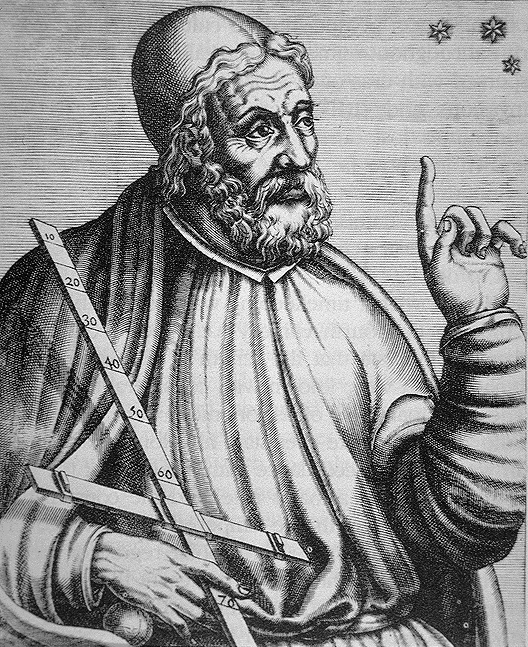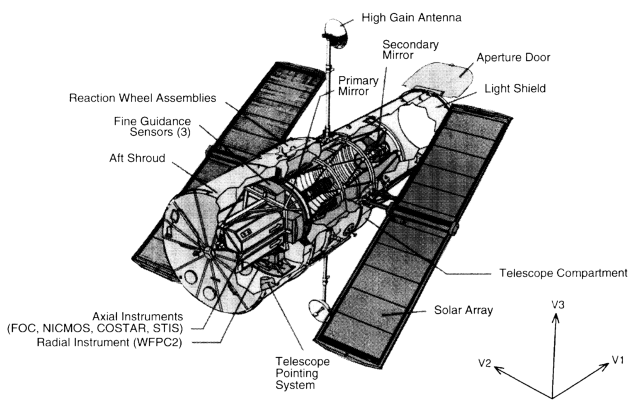





Kepler (http://hep.ucsb.edu/people /hnn/kepler.jpg)

Ptolemy (http://www.thesciencebook-store.com /scienceguys/ptolemy.jpg)
Copernicus(http://scienceworld.wolfram.com /biography/pics/Copernicus.jpg)

Crab Nebula (http://europa.eu.int/comm/research/headlines/images2/stars-crab-nebula.jpg)



A Brief History of Cosmology, the study of the Cosmos
Although our universe and beyond has perhaps been pondered since the beginning of time, a real inquiry began with the Babylonians about 4000 years ago. They were very skilled astronomers, able to predict the apparent motions of the moon, stars, and planets, and even eclipses. But the first civilization known to build a cosmological model to interpret these motions was the ancient Greeks. In the fourth century BC, they came up with the idea that the stars were fixed on a celestial sphere which rotated about the spherical earth every 24 hours, and the planets, the Sun and the Moon, moved in the region between the Earth and stars.
This model of the solar system was further developed in the next few hundred years, resulting in the second century AD with Ptolemy's system. Ptolemy thought that perfect motion should be in circles, thus the stars and planets moved in perfect, heavenly, circles. But, to account for the complicated motion of the planets, which appeared to loop back upon themselves, epicycles (see here) had to be used so that the planets moved in circles about the fixed earth.
Ptolemy's model was complicated, but very successful at reproducing the apparent motion of the planets. When Copernicus in the sixteenth century proposed a system with the planets revolving around the sun, instead of Ptolemy's earth-centered system, he could not match the accuracy of Ptolemy's system, even though his system was much closer to the correct motion of the planetary system. Copernicus was therefore widely rejected, even by the greatest astronomer of the time, Tycho Brahe. His theory was only accepted in the early seventeenth century after the invention of the telescope and the discovery by Galileo that moons orbited Jupiter, and therefore, it was quite possible for planets to orbit the sun. Also, Tycho Brahe's assistant Kepler discovered the key to building an earth-centered model. He discovered the planets moved in ellipses, not perfect circles.
It was after this discovery that it became evident that the stars must be a long distance from the sun, because it was settled that the earth was orbiting the sun, and if the earth were fixed, we would not see the relative position of the stars change. It was therefore settled that the universe was a large sea of stars, each very far away from each other Galileo affirmed this by discovering thousands of unseen stars using a telescope. It was Isaac Newton that concluded that the universe must be infinite and full of stars, each a lot like our sun. An approximate distance was not measured until the nineteenth century.
A majority of the visible stars in the sky are in the Milky Way, our galaxy. However, were there then other galaxies like ours? This was not known at all until in the 1920's when American astronomer Hubble established that the fuzzy patches of light wondered about by astronomers were galaxies like ours. Hubble also discovered that these galaxies looked like they were moving away from us, with velocities proportional to their distance. Along with Albert Einstein's theory of relativity, this affirmed that the universe is expanding. It was discovered like this: Einstein proposed his theory in 1915, part of which showed that matter tends to fall together under gravity, making a steady universe impossible. Instead of realizing this, Einstein included an arbitrary constant which became known as the "cosmological constant", that could balance the gravitational force and keep the galaxies apart. Einstein, when he later learned that the universe is indeed expanding, considered the cosmological constant his greatest mistake. In 1917, the mathematician Friedmann realized Einstein's equations could describe an expanding universe, and discovered the solution indicated that all matter was born at one instant in the past, and now was moving away from us. A critic of this theory, British astronomer Fred Hoyle, called it a "Big Bang", and the name stuck with it.
Although this "Big Bang" is widely accepted among astronomers and cosmologists today, there is an alternate model proposed by Hoyle and some of his colleagues, called the Steady State theory, which attempts to explain this expansion without a beginning of time. This seemed very acceptable at the time, however, in 1965 two astronomers named Penzias and Wilson discovered a cosmic microwave background radiation, and it was interpreted as a faint aftermath of the intense radiation of the hot Big Bang, which was predicted in 1949. This hot Big Bang has become well accepted since the 1970's, but still raises many questions and problems among scientists. Hundreds of questions also arose out of this theory, such as how the galaxies formed out of primordial expansion, what the universe is mostly made up of, the shape of the universe, and many more. Out of these discoveries and theories rose a huge interest in the physics of our universe, sparking new ideas and theories, and well as revisions of old theories.
And so here we are today, in the most scientific age in history. Knowledge of our universe is growing rapidly, but we have barely scratched the surface. Who knows what is out there, waiting to be discovered?
Click on links to go to other pages on this site: